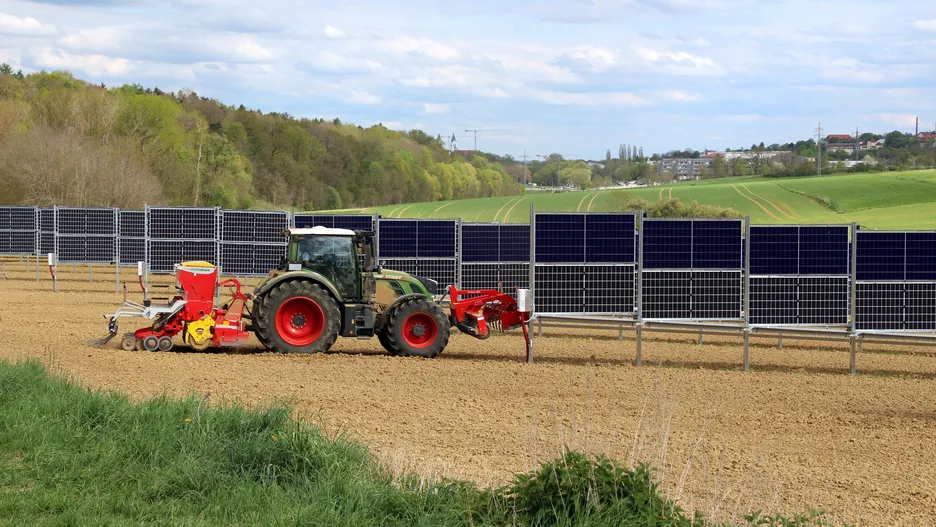Agri Photovoltaics

Renewable sources of electricity are one of the key components in reducing greenhouse gas emissions and mitigating climate change. Agricultural Photovoltaics (Agri-PV) are an approach aiming at the dual use of fertile arable land. Only a minor proportion of a field is used for the installation of a photovoltaics construction while the major part is available for farming. There are several methods for its use: Whereas an elevated system is installed above the cultivated crop, a bifacial installation (= with double-sided solar cells) is constructed as rows in-between the crops.
In the past years, research has mainly focused on pomiculture and livestock husbandry in combination with photovoltaics. However, in the meantime further scientific and public interest lies in the use of Agri-PV in combination with cereal crop production. Researchers at TUM were engaged in initiatives concerning Agri-PV in the past. They are eager to advance knowledge about the effects of agrivoltaics on cultivation, crop growth and the ecosystem in the future.
Research goals
The site is open to all research questions, e.g:
- How does the yield of the crops grown change with the plants?
- How does the microclimate change under the plants?
- What effects do the plants have on insects and biodiversity?
- What economic effects (e.g. working time in maintenance, electricity savings, ...) do the systems have?
- ...
The plant is also available to researchers at the site for other research areas.